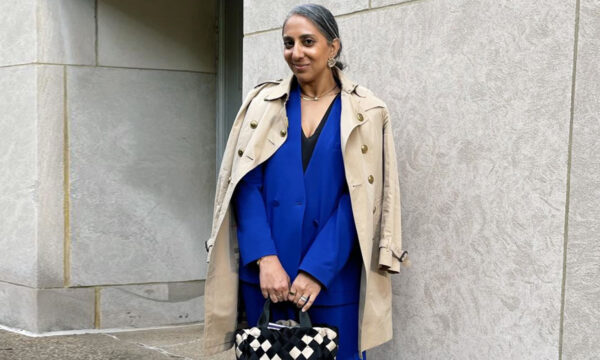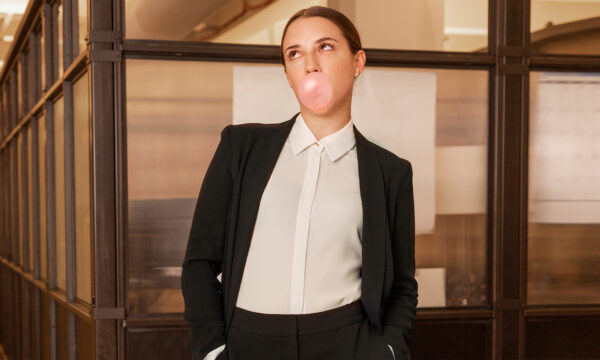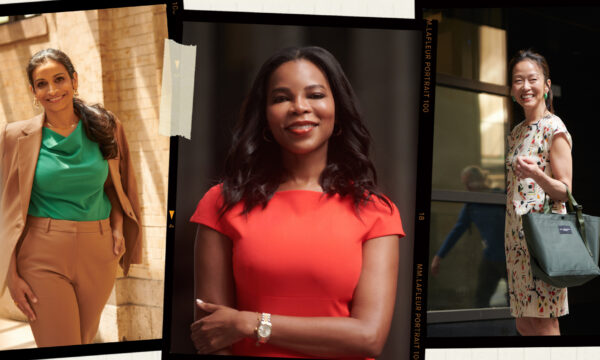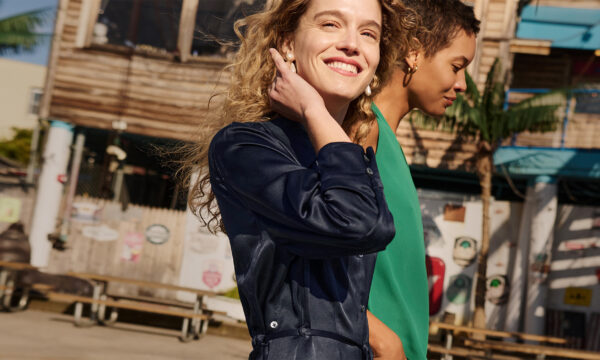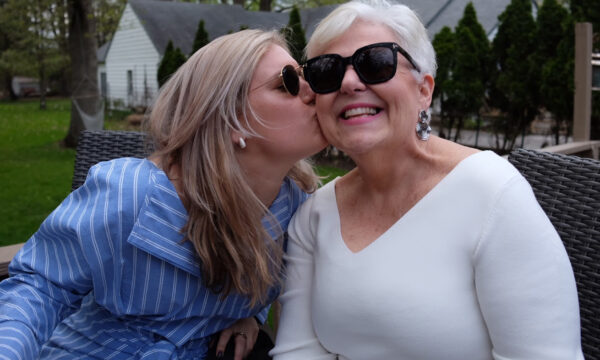
Shop This Look
Facing a Career Setback? Ballerina Tiler Peck Has the Advice You Need to Hear
The New York City Ballet principal dancer embraces joy by facing hard things head-on.
If you’ve seen her perform or encountered her Instagram page, you know that Tiler is one of those people who exudes joy in everything she does. “I love being on stage and getting to express myself through movement,” she says. “I have always felt the music within me.” Tiler is at her happiest when she’s dancing—and she doesn’t need a studio or a stage to do it. “[For my wardrobe,] the most important factor is movement, so if I want to break out into dance at any moment, I can,” she says. The pieces she selected for her capsule embody her energy to a T: colorful, exuberant, and made for movement.
While professional ballerina is a dream career for many, it’s also one that comes with significant risk: In 2019, Tiler suffered a major neck injury that forced her to stop dancing for nine months. During that time, she had to confront some hard questions. “You’re like, ‘Wait, who am I if I’m not dancing?’” she says.
But through her injuries, she’s learned a thing or two about herself. For one, she’s discovered that pretending positivity doesn’t lead to true healing. Sometimes, the only way past a setback is through it: “You have to feel all of the emotions that come with it—be scared, be all of it, and really listen to how you’re feeling,” she says. “I’ve always felt that in those moments, you grow so much as a human.”
I spoke with Tiler about how she expresses her style on and off the stage, the thing that motivated her to expand her career beyond dance, why she rarely uses filters on Instagram, and so much more. Read our full conversation below.
Want more M Dash?
Sign up for our weekly newsletter.
Thank you!
Her Closet
At M.M., we think a lot about the power of costume—the way clothes can impact the way you show up in the world. As a dancer, you probably understand the influence of costume better than most. How do you express your personal style in and outside of dance?
In the dance world, costume tells us which ballet we’re dancing. Just like the music and the style of choreography, costume is used to differentiate each ballet. The way you dance in a tutu feels different than the way you dance in a chiffon skirt, or just a plain leotard. I’ve always thought of clothes as an expression of personality, and since I spend most of my day wearing a leotard for rehearsal, I try to bring my style into my rehearsal looks.
I’m from sunny California, and while I do feel like I’ve added more black to my closet since I’ve lived in New York, I love color. I love that my capsule collection is coming out during the summertime, because I got to include those vibrant colors. That’s my personality—anything I wear, hopefully, is joyful.


As an athlete, you face unique challenges when getting dressed. What qualities do you look for in your non-dance clothes?
I love to dance, even in street clothes—so I always like to wear something with movement, like the Nene dress in peacock print from my capsule collection. I felt like it was so easy to move in, which was really fun. Same with the pants I chose—there was a lot of breath and movement in the Zhou culottes and even the Milo jeans. As an athlete, I like things that are tight-fitting and show off my figure, but the most important factor is movement, so if I want to break out into dance at any moment, I can.
You have some travel coming up—what’s on your packing list? And what’s your approach to packing in general?
First, I always have a pair of pointe shoes, plus my leotards and a pair of shorts that I wear over leotards for class and keeping in shape. I prefer a sweat outfit for the plane, because I don’t like sitting in jeans for hours—I like to be comfy.
I also packed so much of my M.M.LaFleur stuff. Of course, I packed the Nene dress, because it’s just perfect. I’m also bringing the Liam sweater, because it’s such a good piece for this time of year, when it’s hot outside, but everybody’s blasting the A/C inside. And then I packed the Milo jeans, just because I think they’re so cute—I love that they’re structured like jeans, but there’s so much stretch and movement. To me, they’re the best of both worlds. And I love those cheetah Clancy earrings.
I’m also bringing the M.M.LaFleur x Koio sneakers—those were the best find. As ballerinas, we have to wear sneakers to support our feet. But I find it hard, because usually, they’re so not cute. With these, I feel like I finally found a way to be chic, but also comfortable. I was so happy to find them.
Her Career
Professional ballerina is a career that many people romanticize, but of course, like any job, it comes with challenges. What’s your favorite thing about your job, and what’s the hardest thing about your job?
My favorite part is just the way dance makes me feel. I love being on stage and getting to express myself through movement. I have always felt the music within me. That’s the best part of this career—that feeling of being on stage, of flying, of being lifted by your partner. I mean, it’s just so magical, you forget that it’s a job. Sometimes I can’t believe I get to do this for a living.
The hardest thing is dealing with injuries. Ballet is very demanding; you have a short career, and you have to work through a lot of injuries. Some are minor, and some aren’t. I’ve had both—I just had one where I had to take 10 days off, and then I was fine. But I had one where I was off for nine months.
Those times are really hard, because you’re like, “Wait, who am I if I’m not dancing?” It’s different for everyone, but there have been times when I also needed to heal other parts of myself—things that maybe I had suppressed and turned to dance to distract myself from. But I’ve always felt that in those moments, you grow so much as a human, and when you come back to dance, you’ve grown artistically because you’ve grown as a person.


You’ve shared parts of your injury-recovery journey on social media, and I know you’ve inspired so many people by doing so. What’s your advice for someone going through a major career setback?
During my injury, I learned that the physical and the mental are very much related. When something’s hurting, it’s easy to just focus on that physical injury, but in order to give the body the best chance to heal, you have to make both work in tandem. While I had physical therapists, there wasn’t much we could do but wait—I just had to rest. So for me, a lot of the work was about getting my energy to continually flow. My injury was in my neck, which is between the head and the heart, so much of my healing was about getting my mind to stop overworking and to really feel what I was feeling. And sometimes that feeling would just be, “This sucks.”
That’s something I had to learn. A lot of times, people think, “Oh, if I think positive thoughts, it will help.” And I do believe that’s true, but if you’re just pretending to be positive, that’s not really helping you heal. If you’re experiencing a career setback, I think you have to feel all of the emotions that come with it—be scared, be all of it, and really listen to how you’re feeling. That’s hard for some people. I didn’t want to do it, either, and it made me really uncomfortable, but over time, I got much better at it. As a result, I grew so much as a human being and got to know myself better.
You’ve done so much in your career outside of dance. I think that’s really admirable, because especially as women, it can be hard to branch out from the paths people expect us to take. What motivated you to work on projects outside of your dance career? And what are you working on now?
I’ve always been my happiest when I’m busy and feel fulfilled in many different ways. Dance is such a big part of my life, but I didn’t want to wait until I was finished with this career to be like, “What do I do next?” To me, that seemed scary.
I’m always trying to find things that excite me. I loved school, and I loved writing, so writing the children’s book with my co-author was really fun. The book is about dance, but it’s also about being okay with being different. The girl in the book doesn’t have the “perfect” body, or what she thinks the “perfect” bun looks like, but her inner light shines through when she dances, and that’s what makes her special. It’s about reminding people that we all have our own special gifts, and that sometimes, being different is the best thing.
I try to continually challenge myself to do things I’ve never done before, and that’s how I ended up doing choreography. Mentors of mine, Heather Watts and Damien Wetzel, asked me if I would choreograph, and I was really scared for a long time, but finally, I just said, “Sure, let’s try it.” And I actually really liked it. I realized I had never allowed myself the confidence, nor the time, to explore it before.
Recently, I put together a show called “Turn It Out with Tiler Peck and Friends” that is now touring and was born out of the “Turn It Out with Tiler” classes that I did on Instagram during the pandemic. So far, we’ve done it in New York and London, and we’re getting ready to take the tour to the West Coast in the fall. It’s been so amazing—we got five-star reviews in five of the best papers, and I’m so grateful. I’m hoping to tour it to many more cities.
Her Brain
M.M.LaFleur was founded on the belief that when women succeed, the world is a better place. What does success look like to you right now?
I think success is your personal best. I’m my own hardest critic—someone could say, “You were so beautiful tonight,” but if I didn’t feel it inside, it’s not good enough. So for me, I measure success by whether I met my own standards. I almost always feel like I could’ve done better, but there are those times when I think, “Oh, that was a performance I’d like to remember.”

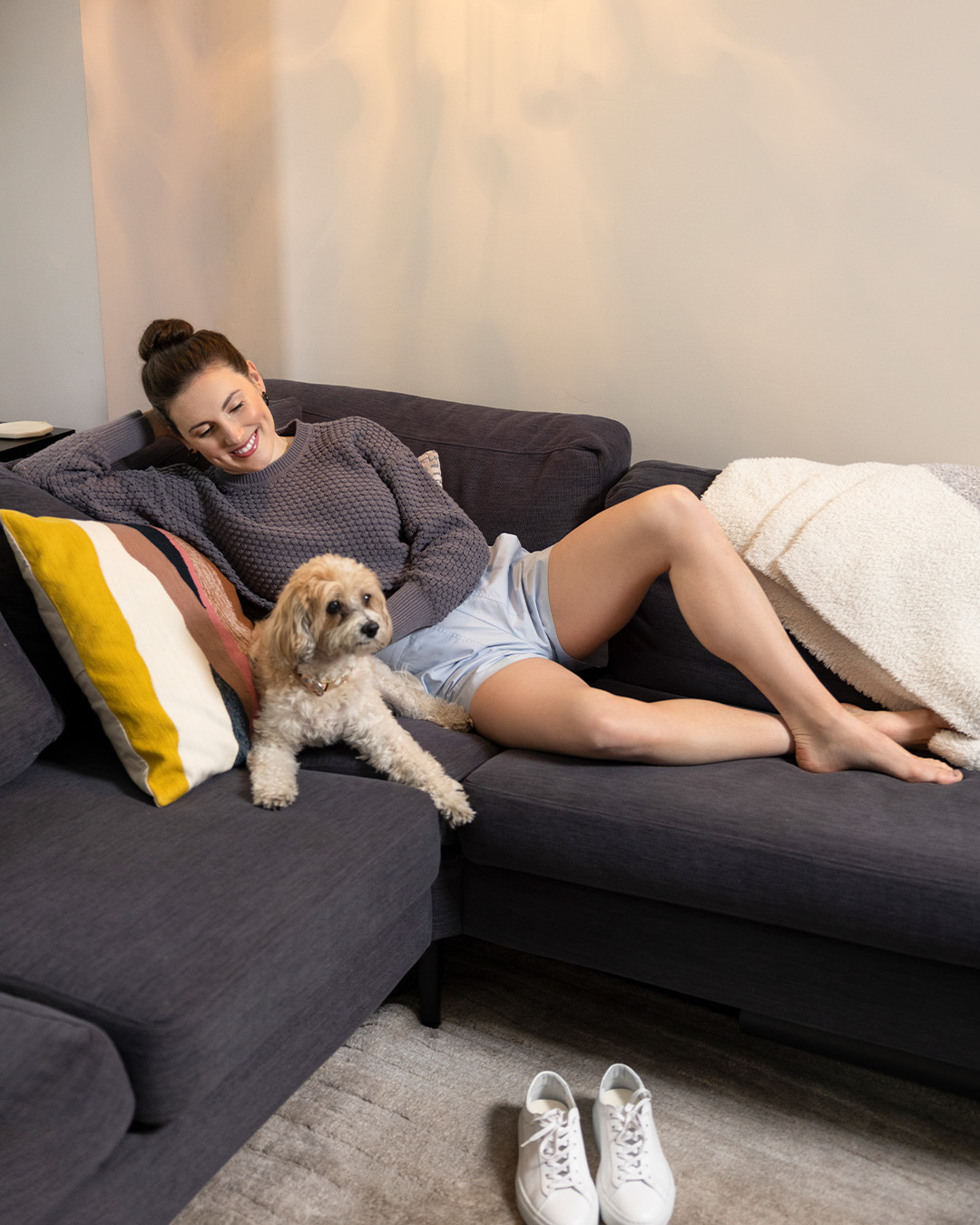
Between your children’s books and your Instagram presence, there are a lot of young girls who look up to you. What do you hope they learn from following your career?
I’ve always tried to really be myself on Instagram. I feel like a lot of times, people see ballerinas and think, “They must be mean,” or, “They don’t eat,” and all those things are just so not me. What I really loved during the pandemic was getting to connect with people through the classes, so that they could see how I am—I was home with my parents just like everyone else, dancing in the kitchen. I make mistakes, and I laugh at myself. There were also days when I was really unhappy. I hope that by being very authentic, I can show people that there are many ways to be a ballerina, and many ways to be a human.
Recently, I found that people really liked seeing how I came back to the stage after my injury. I shared that I was scared to go back on pointe for the first time, because I was so fearful that pain would still be there. I think if you’re looking at a person from afar, it’s easy to think her or her life is perfect all the time, and that’s just not the case.
If the you from 10 years ago could see where you are today, what do you think she would say?
I said this the other day, but I still don’t really know how I am a principal dancer in New York City Ballet. I grew up doing all kinds of dance, and ballet was the hardest one for me. I think that that’s why I grabbed onto it: I love a challenge. But I always felt like a wannabe—like a jazz dancer trying to be a ballerina. I was doing this hard piece last season, and I looked at my partner and was like, “I don’t know how I’m in a tutu right now, dancing the principal role in this piece.” To me, it’s still so shocking.
So, I think what I would say is, “Follow your dreams.” I’m so glad that I did, because who would’ve thought a girl from Bakersfield would end up here? Some of my jazz teachers see me now and still don’t know how it happened—not because I lacked talent, but just because I was so fierce in the jazz world that everybody thought I would go in that direction, myself included.
I’m so happy it went the other way, and I guess another thing I’d say is, “You’ll figure it out along the way.” No career is a straight line. I knew I wanted to dance, but I never would’ve thought I would become a ballerina. I’m so grateful that that’s the way it went.





